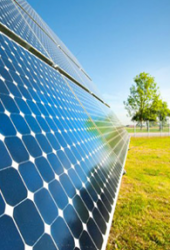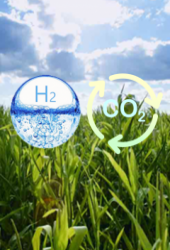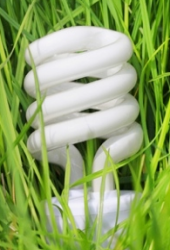Detail:
- Abstract
Since Post Cold War up until now, energy issue can be classified as a new form of threat that undermined state stability all over the world. Therefore, co-operation in terms of energy, particularly with energy exporting countries and also with neighbouring countries, could be seen as part of solution. As for Thailand, several oil energy crisis, economy growth plus international politic factors forced Thailand to create policy in the use of co-operation such as energy trading co-operation to solve energy resource disputes with them. The disputes include natural gas and hydropower issues, particularly between the decades of 1990 to 2006. It was the moment that Thailand and its neighboring countries could reach considerable mutual agreements of energy co-operation which the levels of success are various.
Keywords : Thailand/Energy/Policy/Neighbors - บทคัดย่อ
การศึกษานี้เป็นส่วนหนึ่งของวิทยานิพนธ์การออกแบบและพัฒนาระบบท่อนำแสงแนวนอนสำหรับอาคารประเภทสำนักงานโดยมีวัตถุประสงค์เพื่อศึกษารูปแบบและทิศทางการรับแสงธรรมชาติของระบบท่อนำแสงแนวนอนที่ส่งผลต่อประสิทธิภาพการนำพาแสงธรรมชาติและปริมาณแสงภายในอาคารประเภทสำนักงานของกรุงเทพมหานคร โดยมีจุดมุ่งหมายเพื่อพัฒนาองค์ความรู้สำหรับประยุกต์ต่อยอดในการพัฒนาเทคนิคการนำแสงธรรมชาติมาใช้งานในอาคารสำนักงาน งานวิจัยนี้ศึกษาผ่านการจำลองสภาพแสงธรรมชาติและระบบท่อนำแสงแนวนอนด้วยโปรแกรม Photopia 3.0 โดยมีแบบจำลองประสิทธิภาพทางด้านแสงสว่างจำนวน 5 รูปแบบที่มีลักษณะของส่วนรวมแสงและส่วนนำพาแสงแตกต่างกัน และจำลองภายใต้สภาพท้องฟ้าโปร่งที่มีรังสีตรงจากดวงอาทิตย์ที่กระทำมุมต่างๆ กับพื้นโลก
ผลการศึกษา พบว่า ปัจจัยที่มีอิทธิพลต่อประสิทธิภาพของระบบท่อนำแสงแนวนอน ได้แก่ 1) ทิศทางการรับแสงธรรมชาติ คือ ประสิทธิภาพของระบบท่อนำแสงแนวนอนจะแปรผกผันตามขนาดมุมของแสงที่กระทำกับแนวท่อในส่วนนำพาแสง โดยมุมขนาดเล็กจะให้ประสิทธิภาพของระบบท่อนำแสงแนวนอนสูง 2) ลักษณะของส่วนรวมแสง คือ ส่วนรวมแสงที่สามารถปรับทิศทางมุมแนวดิ่งและมุมแนวราบของแสงธรรมชาติในช่วงเวลาที่ต้องการให้ขนานกับท่อในส่วนนำพาแสงมากที่สุด จะช่วยเพิ่มประสิทธิภาพของระบบท่อนำแสงแนวนอน 3) ลักษณะของส่วนนำพาแสง คือ ส่วนนำพาแสงที่มีจำนวนการสะท้อนแสงภายในต่ำ (มุมตกกระทบของแสงมีขนาดใหญ่) ทำให้แสงถูกดูดกลืนน้อยส่งผลให้ประสิทธิภาพของระบบท่อนำแสงแนวนอนเพิ่มมากขึ้น
คำสำคัญ : ท่อนำแสง, แสงธรรมชาติ, อาคารสำนักงาน - บทคัดย่อ
งานวิจัยนี้มีวัตถุประสงค์เพื่อทดสอบประสิทธิภาพของระบบผนังกระจกสองชั้นแบบใช้การระบายอากาศโดยวิธีธรรมชาติ โดยใช้กล่องทดลองมีขนาด 1.3×2.5×3.0 ม. มีความกว้างของช่องลมเข้าและช่องลมออก 0.3 ม. และมีความกว้างของช่องอากาศ 0.3 ม. ทำการทดลองโดยใช้แสงจากหลอดฮาโลเจนขนาด 500 W จำนวน 8 หลอด แทนแสงอาทิตย์จริง ทำการทดลองในห้องปิดที่ไม่มีอิทธิพลของรังสีอาทิตย์และแรงลมภายนอกเข้ามาเกี่ยวข้อง วัดอุณหภูมิและความเร็วลมในส่วนต่างๆ ของกล่องทดลอง ทำการทดลองกับกระจก 5 ชนิด โดยกระจกชั้นนอกจะใช้กระจก 3 ชนิดคือ กระจกใส กระจกสีตัดแสง และกระจกสะท้อนแสง ส่วนกระจกชั้นในจะใช้กระจกใสและกระจกอินซูเลทใสเพื่อเป็นตัวแทนของกระจกที่มีค่าสัมประสิทธิ์การถ่ายเทความร้อนสูงและต่ำตามลำดับ ซึ่งกระจกทั้ง 5 ชนิดนี้สามารถนำมาจับคู่เพื่อทำการทดลองได้ทั้งหมด 6 รูปแบบคือ กระจกใสกับกระจกใส กระจกสีตัดแสงกับกระจกใส กระจกสะท้อนแสงกับกระจกใส กระจกใสกับกระจกอินซูเลทใส กระจกสีตัดแสงกับกระจกอินซูเลทใส และกระจกสะท้อนแสงกับกระจกอินซูเลทใส
หลังจากนั้นนำค่าอุณหภูมิและความเร็วลมที่วัดได้มาคำนวณโดยแบบจำลองทางคณิตศาสตร์เพื่อหาค่าสัมประสิทธิ์การถ่ายเทความร้อนรวมของผนัง (U-factor) จากการคำนวณพบว่าความต่างของอุณหภูมิผิวกระจกชั้นนอกกับอุณภูมิภายในช่องอากาศ เป็นปัจจัยสำคัญที่ทำให้เกิดความเร็วลมและค่าสัมประสิทธิ์การพาความร้อน (hc) ถ้ามีความต่างมากความเร็วลมและค่า hc ภายในช่องอากาศก็จะมีค่ามากตาม ซึ่งค่า hc จะมีผลต่อค่า U-factor ของระบบผนังกระจกสองชั้นเป็นอย่างมาก โดยค่า U-factor ของระบบผนังกระจกสองชั้นที่มีกระจกสะท้อนแสงเป็นกระจกชั้นนอกและกระจกอินซูเลทใสเป็นกระจกชั้นในมีค่า U-factor น้อยที่สุดคือ 0.843 W/m2.K และระบบผนังกระจกสองชั้นที่มีกระจกสีตัดแสงเป็นกระจกชั้นนอกและกระจกใสเป็นกระจกชั้นในมีค่า U-factor มากที่สุดคือ 1.464 W/m2.K และเมื่อนำค่า U-factor ของระบบผนังกระจกสองชั้นมาเปรียบเทียบกับระบบผนังกระจกชั้นเดียว พบว่าค่า U-factor ของระบบผนังกระจกสองชั้นมีค่าต่ำกว่า 51-72%
การใช้กระจกสะท้อนแสงเป็นกระจกชั้นนอกในระบบผนังกระจกสองชั้นจะมีประสิทธิภาพในการกันความร้อนได้ดีที่สุดเนื่องจากเมื่อนำมาประกอบเป็นระบบผนังกระจกสองชั้นแล้วจะมีค่า U-factor และ ค่าสัมประสิทธิ์การบังแดด (SC) ที่น้อยที่สุด การใช้กระจกชั้นในเป็นกระจกอินซูเลทใสจะทำให้ลดความแตกต่างของค่า U-factor ที่เกิดขึ้นเมื่อกระจกชั้นนอกเป็นกระจกต่างชนิดกันลงได้ โดยในระบบผนังกระจกสองชั้นค่า SC จะมีผลต่อประสิทธิภาพในการกันความร้อนมากกว่าค่า U-factor เนื่องจากค่า U-factor ของระบบผนังกระจกสองชั้นจะมีค่าใกล้เคียงกันแม้ว่ากระจกภายนอกจะต่างชนิดกัน
คำสำคัญ : ระบบผนังกระจกสองชั้น; การระบายอากาศโดยวิธีธรรมชาติ; แบบจำลองทางคณิตศาสตร์ - Abstract
This research proposes a study of the geographic information system (GIS) to optimize the location of biogas power plant from dairy cow dung in Lamphayaklang Reform Land Dairy Cooperative in Muaklek, Saraburi Province. The scope of this study covers the number of dairy farms at 733 farms with 18,962 dairy cows. The suitable locations for this study are the location at Dairy cooperative, the location with highest household density, and the location with highest dairy cow density. This study is also focused on the size of biogas power plant that is utilized biogas from dairy cow dung by considering the production efficiency of 5 biogas technologies which are upflow anaerobic sludge blanket (UASB), cover lagoon or modified cover lagoon, completely stirred tank reactor (CSTR), fixed film and hybrid channel digester. Furthermore, the financial indices are evaluated in term of net present value (NPV), benefit cost ratio (B/C), and internal rate of return (IRR) to support the decision making of dairy cooperative for optimizing size and location of biogas power plant. The study results show that the optimal size of biogas power plant from dairy cow dung is 952 kW, the suitable biogas technology is UASB, and the optimal location is at Lamphayaklang Reform Land Dairy Cooperative which is the location with the least logistic cost. Finally, the financial analysis results present B/C at 1.37, NPV at 57,420,269.21 Baht with 6 % of discount rate and IRR at 21.16% when the project lifetime is 15 years.Keyword : Power plant, Biogas, Cow Dung, Geographic Information System
- Abstract
The purpose of this research is to develop a model for Specific Energy Consumption by using the equivalent unit technique in electronic industry. The research will be used as a guideline for consuming the energy (Benchmark) in an electronic industry.
To calculate Specific Energy Consumption is to use the energy consumption amount divided by quantity of product. The Fact that each factory has many varieties of products causes the difference of energy usages and the use of time, therefore the Specific Energy Consumption need to be more accurate. Also, the calculation of unit cost tends to be inaccurate due to the causes of different factors in the process of production. Therefore in the research the calculation of unit cost is made by the analysis of Specific Energy Consumption by using Equivalent Unit (EU) technique. The result from the research will bring about the new calculation of Specific Energy which changes only 1%to 74% from the past.
The information based on this model development of Specific Energy Consumption research has been collected from many electronic industries which focus on energy. The next thing is to analyze the relationship among variables of energy usage in electronic industries by the mean of multiple regressions. The result of the research found that main variables which affected the maximum energy consumption are the operation time, the number of product and the difference of temperature. In this research, the product models were developed into 5 types, which is A,B,C and D. the equitation of the models are 1. electric energy (kWh) = -1,175 + (0.094 x product A1) + (0.026x product A2) + (0.00038 x product A3) + (0.0142 x product A4) + (0.0179 x product A5) , 2.electric energy (kWh) = – 4,055 + (0.0848 x product B1) + (0.0518x product B2) + (0.00907 x product B3) + (0.0603 x product B4) , 3. electric energy (kWh) = -3487, + (0.00916 x product C1) + (0.0358xผลิตภัณฑ์ C2) + (0.0382 x product C3) , 4 electric energy (kWh) = -1,849 +(0.0127 x ผลิตภัณฑ์ D1) + (0.00857x product D2) , 5. electric energy (kWh) = -3,098 +(0.0179 x product E1) + (0.00568x product E2)
Keywords : Energy, Specific Energy Consumption and Energy Consumption Model - Abstract
This project is aim to create value added to crude glycerol which is a by-product from biodiesel production process. The glycerol oxidation using gold based catalyst would gave glyceric acid as main product. The oxidation of glycerol to glyceric acid was studied by using citrate stabilized gold nanoparticles catalyst. An optimum condition was examined by using pure glycerol as a reactant. Effect of reaction temperature, time, oxygen pressure, catalyst concentration, reactant concentration and base concentration on the glycerol oxidation were investigated. It was found that the oxidation of glycerol at 80°C for 3 hours under 3 bars oxygen using 50 ppm catalyst with 0.6 molar reactant and base to glycerol ratio of 1:1 was the optimum condition owing the highest glycerol conversion and spectroscopic yield of glyceric acid of 35.36% and 22.72% respectively. However, the oxidation of crude glycerol under the same condition exhibited the lower glycerol conversion and spectroscopic yield of glyceric acid compared with pure glycerol oxidation.
Keywords :ค่าประสิทธิผลโดยรวมของเครื่องจักร
Volume : 7 Issue : 2 Year : 2010





